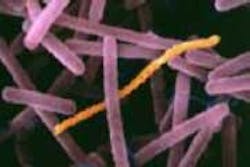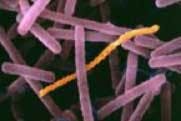Deadly West Nile virus; lessons from a special patient; probiotics; heart of the matter
As traditional (not official!) summer comes to an end, and the school year commences, we are still plagued with pesky mosquitoes. However, these critters are more than just a nuisance and irritating, they can be deadly by causing diseases like the West Nike virus. The number of cases of West Nile virus has grown dramatically in recent weeks and public health experts suggest that if the trend continues, this year’s outbreak may rank among the largest in U.S. history. According to data from state health departments compiled by the Centers for Disease Control and Prevention (CDC), 47 states have reported West Nile virus infections in people, birds or mosquitoes so far this year. A total of 1,118 cases of West Nile virus disease in people, including 41 deaths, have been reported to CDC, which is the greatest number of cases reported through this time of year since 1999, when the virus was first detected in the United States. Texas has been more hard hit than other states. See the feature on this deadly virus, for a patient-page and tips on prevention. Another feature teaches us a good lesson regarding pre-judging patients. We must remember to interview patients, not judge them, and tailor our treatments to their desires and needs. When someone is physically or mentally challenged, and has many healthcare needs, it is easy to forget that their appearance and pride are still very important to them. We have heard that one of the most devastating challenges of someone undergoing chemotherapy is loss of their hair, and sometimes it is difficult to understand why, in the wake of an oftentimes terminal illness, a person is very concerned about how they look. It is all about normalcy, and attempting to live normally rather than give up and let the dying process take over their mind and will. It was the same for Cindy Kleiman's patient; he wanted a beautiful smile in spite of his challenges. Cindy, thanks for reminding us of the “softer” side of our profession. A hot topic in the literature today is probiotics and their impact on oral health. The term probiotic, “for life,” was first used in 1965 to describe “substances secreted by one micro-organism which stimulate growth of another,” contrasting the term antibiotics. We see probiotics useful in the oral environment by helping to control the caries process and periodontal diseases.
Photo Credit: SciMAT/Photo Researchers, Inc. Dental caries and periodontal diseases are multifaceted disease processes, and one of the methods of intervention is bacteria control. Probiotics have been used for years to improve gastrointestinal health, such as in yogurt, and their effectiveness has allowed for increased interest for their role in promotion of oral health. Clinical studies have shown that oral probiotics promote a healthy oral environment, reduce plaque, and prevent oral malodor.(1) GUM PerioBalance by Sunstar is a daily dental probiotic, as is EvoraPro by Oragenics.(2,3) Read Julie L. Young’s helpful article in this newsletter for up-to-date information probiotics and their impact on oral health. As well, the National Center for Complementary and Alternative Medicine (NCCAM) has helpful information on probiotics.(4)
And last, but not least, information about the potential link between periodontal infection and systemic diseases and conditions continues to emerge. The inflammatory burden seems to be the connecting link. See the feature on the latest science on the link between cardiovascular disease and periodontal disease.
As always, thanks to all contributors!
References
1. http://www.gumbrand.com/assets/675/15/August2011.pdf.
2. http://www.periobalance.com/.
3. http://www.oragenics.com/probiotics/evorapro-dental-professionals/how-it-works.
4. http://nccam.nih.gov/health/probiotics.
Sincerely,
Maria Perno Goldie, RDH, MS
To read previous RDH eVillage FOCUS introductions by Maria Perno Goldie, go to introductions.




